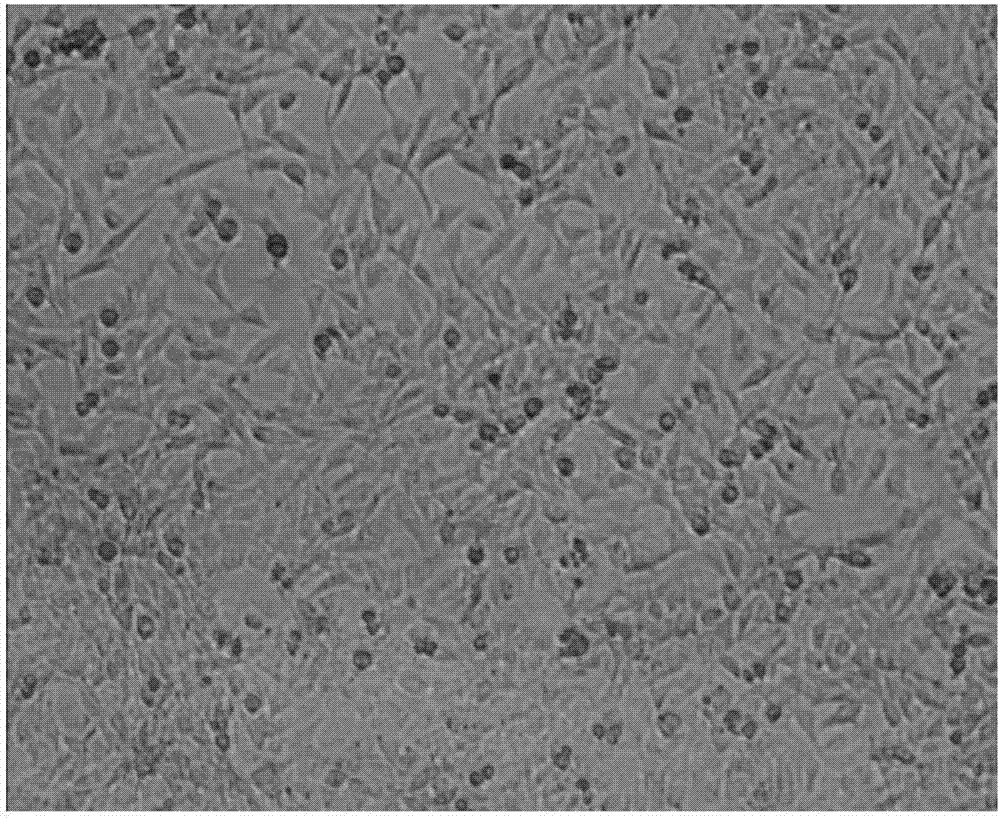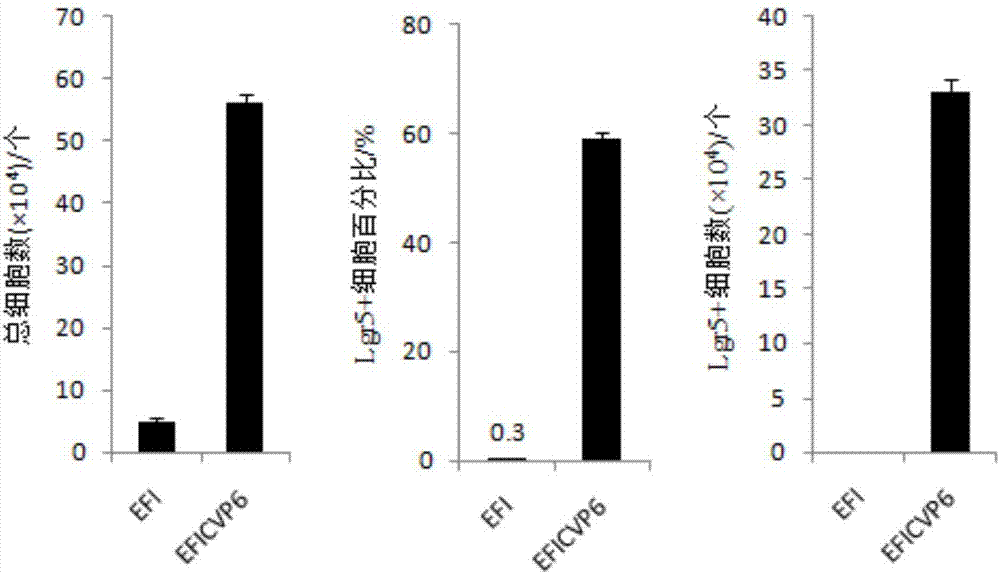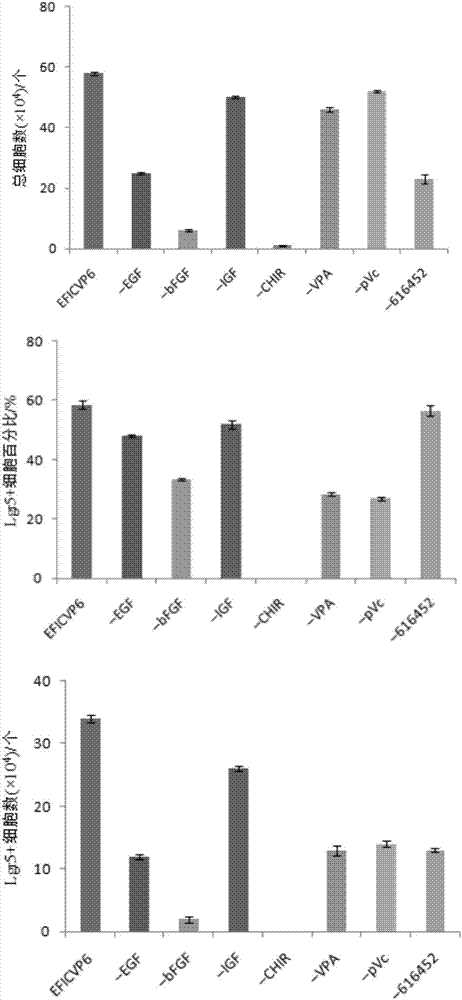Method for differentiating sustentacular cell into inner ear hair cell and application
A technology of inner ear hair cells and supporting cells, applied in new medical fields, can solve problems such as inability to fundamentally treat deafness, and achieve the effect of high differentiation efficiency
- Summary
- Abstract
- Description
- Claims
- Application Information
AI Technical Summary
Problems solved by technology
Method used
Image
Examples
Embodiment example 1
[0028] Example 1: Culture of Sertoli cells in the mouse inner ear
[0029] Cochlear epithelial cells of mice (purchased from Guangzhou University of Traditional Chinese Medicine, female, belonging to SPF (III) grade animals) were isolated, cultured for 10 days, and the medium was changed every 3 days to obtain single cells. Cells were transferred to DMEM+10 containing: 50ng / mL Epidermal Growth Factor (EGF), 50ng / mL Fibroblast Factor (bFGF), 50ng / mL Insulin Factor-1 (IGF-1) i.e. EFI mix %FBS (purchased from Gbico) medium; 50ng / mL epidermal growth factor (EGF), 50ng / mL fibroblast factor (bFGF), 50ng / mL insulin factor-1 (IGF-1), 3μM glycogen kinase Inhibitor-3 (CHIR99021 or C), 1 mM valproic acid (VPA or V), 100 μg / mL 2-phospho-L-ascorbic acid (pVc or P), 2 μM ALK5 inhibitor (616452 or 6) i.e. EFICUP6 mixed factor combination DMEM+10% FBS medium, at 37°C, 5% CO 2 In the incubator, culture for 10 days, change the medium every day, and observe the number of Lgr5+ cells. Sertoli ...
Embodiment example 2
[0030] Example 2: Effects of different factor combinations on differentiation into Lgr5+ cells
[0031] Cochlear epithelial cells of mice (purchased from Guangzhou University of Traditional Chinese Medicine, female, belonging to SPF (III) grade animals) were isolated, cultured for 10 days, and the medium was changed every 3 days to obtain single cells. Inoculate to contain:
[0032] DMEM+10% FBS medium of EFICVP6 mixed factor combination;
[0033] The DMEM+10%FBS medium of the FICVP6 (-EFI) mixed factor combination without adding EGF;
[0034] EICVP6 (-bFGF) mixed factor combination DMEM+10% FBS medium without adding bFGF;
[0035] EFCVP6 (-IGF-1) mixed factor combination DMEM+10% FBS medium without adding IGF-1;
[0036] EFIVP6 (-CHIR) mixed factor combination DMEM+10% FBS medium without adding CHIR99021;
[0037] The DMEM+10%FBS medium of the EFICP6 (-VPA) mixed factor combination without adding VPA;
[0038] The DMEM+10% FBS medium of the EFICV6 (-bFGF) mixed factor comb...
Embodiment example 3
[0040] Example 3: Differentiation of Lgr5+ cells into inner ear hair cells
[0041] The best EFICVP6 medium obtained in Example 2 was selected to amplify Sertoli cells, and cultured for 10 days to obtain Lgr5+ cells. Then add the cells to the induction medium, the induction medium is: DMEM+10% FBS medium; add 5 μM LY411575 (LY) factor DMEM+10% FBS medium; add CHIR99021 (C) factor DMEM+10% FBS culture base; add LY411575 and CHIR99021 (LYC) factor DMEM+10% FBS medium, induce differentiation and culture for 10 days, count the number of hair cells. according to Figure 4 , it was concluded that the number of hair cells induced by DMEM+10%FBS medium added with LYC factor was better than that of medium without factor added and only added with LY or C. Therefore, DMEM+10% FBS medium supplemented with LYC factor was selected as the optimal induction differentiation medium.
PUM
 Login to View More
Login to View More Abstract
Description
Claims
Application Information
 Login to View More
Login to View More - R&D
- Intellectual Property
- Life Sciences
- Materials
- Tech Scout
- Unparalleled Data Quality
- Higher Quality Content
- 60% Fewer Hallucinations
Browse by: Latest US Patents, China's latest patents, Technical Efficacy Thesaurus, Application Domain, Technology Topic, Popular Technical Reports.
© 2025 PatSnap. All rights reserved.Legal|Privacy policy|Modern Slavery Act Transparency Statement|Sitemap|About US| Contact US: help@patsnap.com



